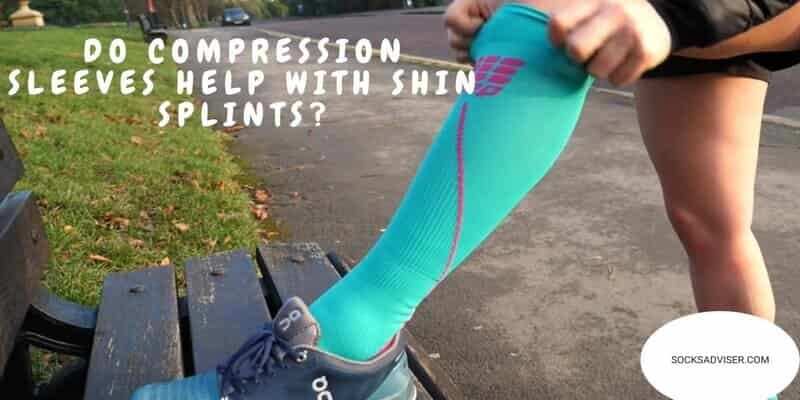Shin splint pain is a common symptom that can develop during exercise. Normally, it occurs when someone runs, jumps, or plays soccer and basketball. However, many exercises and stretching can help relieve shin pain. But the best way to prevent shin splints is using compression sleeves.

So, do compression sleeves help shin splints? Yes. Unfortunately, the compression does not cure all but will help shin splints by making your injury feel better. It also improves muscular strength, muscle efficiency, and pain relief.
Red also: Do Compression Socks Help Tight Calves?
How Do Compression Sleeves Help Shin Splints?
Compression sleeves prevent the appearance of shin splints and help reduce pain during the recovery period. Wear compression sleeves when participating in activities such as running. This is regardless of whether you have a shin splint or not. A compression splint adds another layer of protection to your legs. It protects you from shin splints by squeezing your calves and shins together to improve blood circulation and oxygen flow to the areas around the leg. Here are the top 5 benefits of compression socks that help shin splints.
- Normalizes blood flow
- Reduce shin pain and knee pain
- Improve running performance
- Prevent swelling and stiffness
- Reduce the recovery time
When to Wear Compression Sleeves for Shin Splints?
Well, it is better to wear compression sleeves for shin splints while running, in recovery sessions, or to travel. Even compression sleeves relieve the pain and inflammation of gout-related knee pain.
How to Treat Shin Splints Without Using Compression Sleeves?
Those still wondering what those shin splints are are just some kind of agony embodied in the legs. When it occurs, it can ruin sports joys and even cause problems with walking. But the good news, there are several ways to prevent this annoyance from occurring.
3 Ways to Prevent Shin splints
1. Warm-up and muscle stretching before engaging in any physical activity
There are many ways to prevent shin splints. One of the best ways is to get adequate warm-up and muscle stretching before engaging in any physical activity. This is a crucial step whether you are already a professional or just getting into a job.
2. Don’t go for sudden strenuous activities
To avoid shin splints, make sure you safely exercise or engage in strenuous activities. In addition, you should make sure that you are not overexerting yourself and in proper form throughout the exercise.
3. Prevent shin splints through diet
The other way to prevent shin splints is through diet, which many are unaware of. Vitamins like vitamin D and minerals like calcium, potassium, and copper strengthen bones and joints.
So eating a balanced diet and drinking enough water to prevent dehydration will ensure your joints, muscles, and bones receive all of the nutrients they need to stay strong, healthy and performing.
Conclusion
There are several ways to get rid of your shin splints. You can opt for diet, pre-exercise activities, or a compression sleeve. However, a compression sleeve is a good short-term solution if you have less time to rest.
